Episodes

Saturday Jan 29, 2022
New Narratives on the Late Ming Military: An Interview with Professor Kenneth Swope
Saturday Jan 29, 2022
Saturday Jan 29, 2022
For a long time, Ray Huang's influential book 1587: A Year of No Significance has colored our imagination of the Late Ming, painting the Ming as a state that was stagnant and in decline. Traditional historiography usually focuses on the poor finances of the Ming state, its inability to pay troops, its poor military performance against the peasant rebels and the Manchus, and its factionalism. While all these are true to an extent, more recent scholarships have also uncovered another side to the late Ming - one of military success and military innovation. Professor Kenneth Swope, an expert on Ming military history and author of numerous monographs and articles on the topic, joins us to talk about these new narratives of the late Ming's successes and failures.
Contributors
Professor Kenneth Swope

Professor Kenneth Swope is a Professor of History & Senior Fellow of the Dale Center for the Study of War & Society at the University of Southern Mississippi. He is an expert on Chinese military history, particularly Ming military history and has published numerous monographs, articles, and book chapters on the topic. His major publications include A Dragon’s Head and a Serpent’s Tail: Ming China and the First Great East Asian War, 1592-1598, The Military Collapse of China’s Ming Dynasty, 1618-1644, and On the Trail of the Yellow Tiger: War, Trauma, and Social Dislocation in Southwest China During the Ming-Qing Transition. In addition, he serves as the book review editor for The Journal of Chinese Military History and is a member of the Board of Directors for the Chinese Military History Society.
Yiming Ha

Yiming Ha is a Ph.D. candidate in the Department of History at the University of California, Los Angeles. His current research is on military mobilization and state-building in China between the thirteenth and seventeenth centuries, focusing on how military institutions changed over time, how the state responded to these changes, the disconnect between the center and localities, and the broader implications that the military had on the state. His project highlights in particular the role of the Mongol Yuan in introducing an alternative form of military mobilization that radically transformed the Chinese state. He is also interested in military history, nomadic history, comparative Eurasian state-building, and the history of maritime interactions in early modern East Asia. He received his BA from UCLA and his MPhil from the Hong Kong University of Science and Technology.
Credits
Episode no. 7
Release date: January 29, 2022
Recording location: Hattiesburg, MS/ Los Angeles, CA
Bibliography courtesy of Professor Swope
Images:
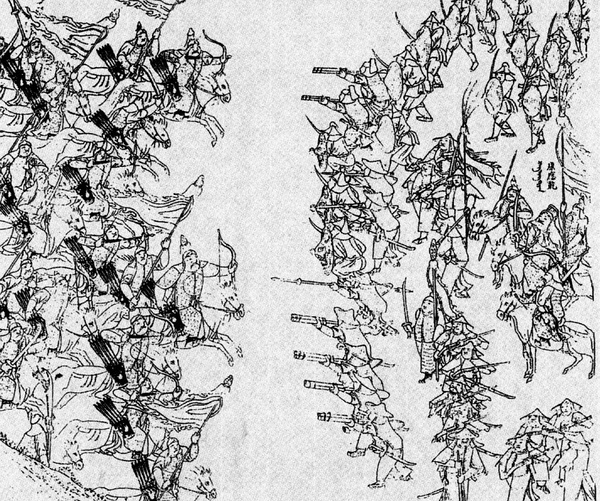
Cover Image: Battle of Sarhu, 1619. Note the use of gunpowder weapons. (Image Source)
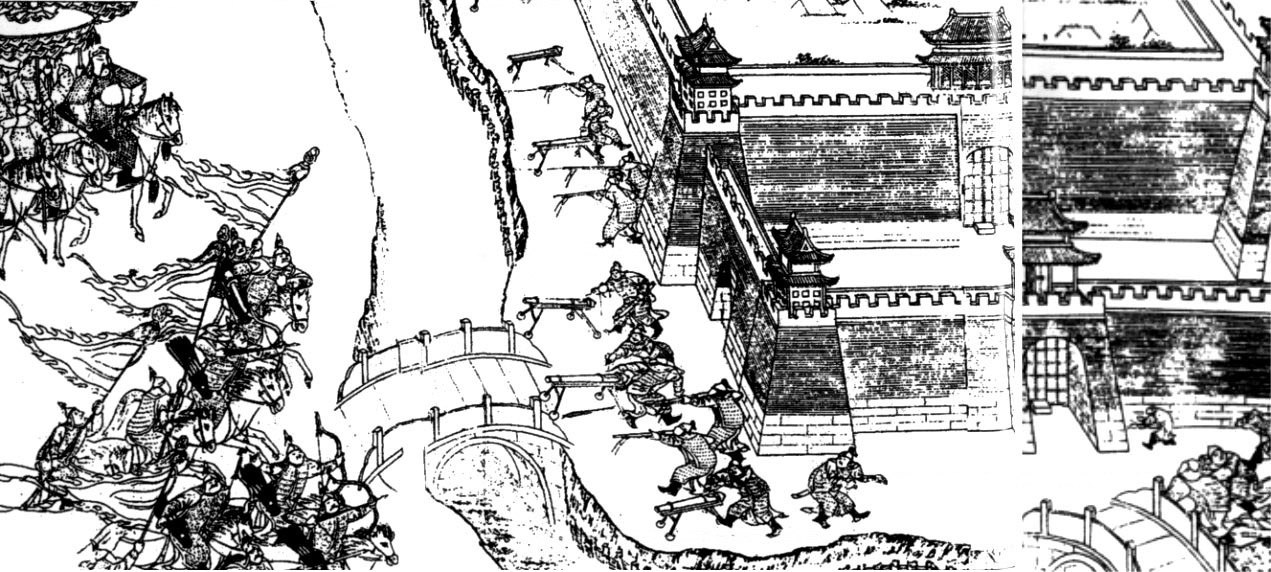
Battle of Liaoyang, 1621. Note the use of gunpowder weapons. (Image Provided by Professor Swope)
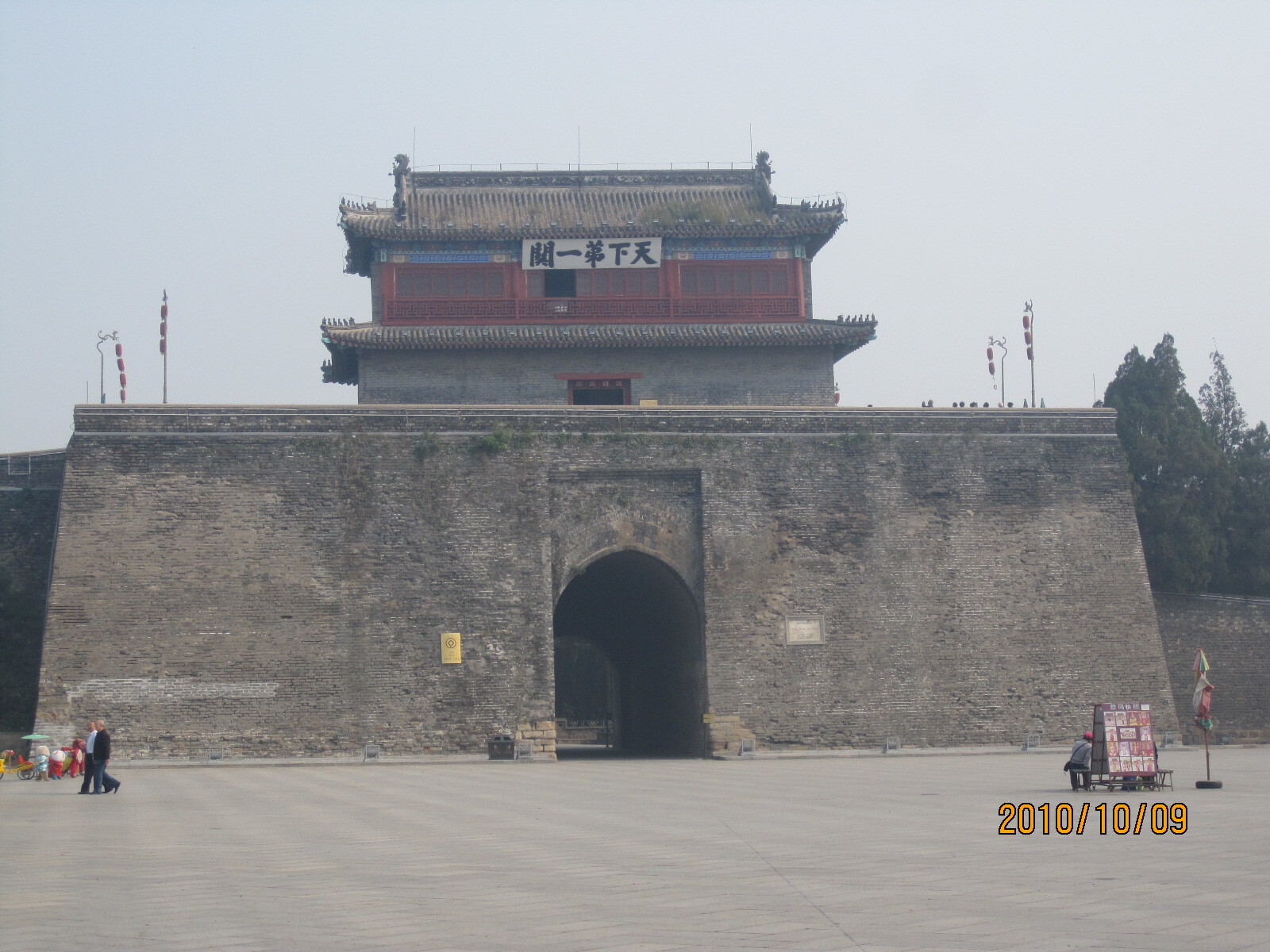
Gate at Shanhai Pass (Photograph by Professor Swope)
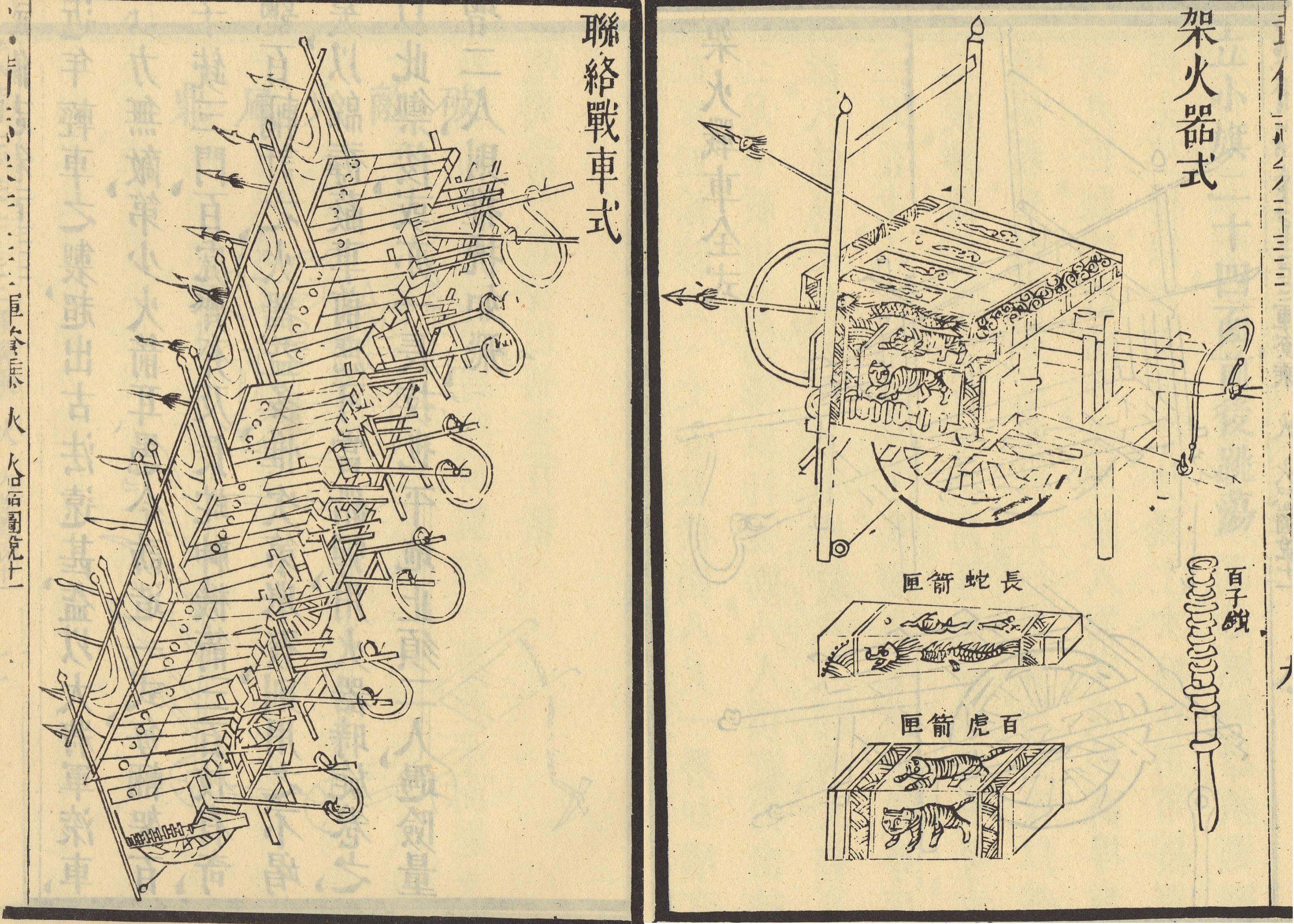
Ming rocket-propelled arrows and launching tube and cart, from the Wubei zhi (for more images of Ming gunpowder weapons, see here)
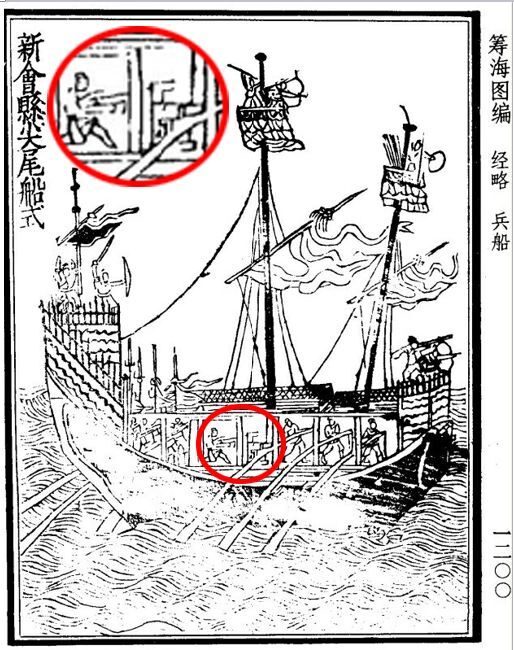
A type of Ming warship from the Chouhai tubian, note the gunner operating a cannon on the lower deck.
References
Andrade, Tonio. Lost Colony: The Untold Story of China’s First Great Victory over the West. Princeton: Princeton University Press, 2011.
Fan Shuzhi 樊樹志. Wan Ming shi 晚明史 2 vols. Shanghai: Fudan daxue chubanshe, 2015.
-----. Wanli zhuan 萬歷傳. Beijing: Zhonghua shuju, 2020.
Parsons, James B. Peasant Rebellions of the Late Ming Dynasty. Ann Arbor: Association for Asian Studies, 1993.
Struve, Lynn A. The Southern Ming, 1644-1662. New Haven: Yale University Press, 1984.
Swope, Kenneth M. On the Trail of the Yellow Tiger: War, Trauma, and Social Dislocation in Southwest China during the Ming-Qing Transition. Lincoln: University of Nebraska Press, 2018.
-----. The Military Collapse of China’s Ming Dynasty. London: Routledge, 2014.
-----. A Dragon’s Head & a Serpent’s Tail: Ming China and the First Great East Asian War, 1592-1598. Norman: University of Oklahoma Press, 2009.
Wakeman, Jr., Frederic W. The Great Enterprise. 2 Vols. Berkeley: University of California Press, 1985.

Sunday Dec 26, 2021
The Mongol-Yuan Conquest of the Southern Song
Sunday Dec 26, 2021
Sunday Dec 26, 2021
We hope everyone had a good Christmas! In this episode, Yiming Ha will give an introduction to the forty-four year war between the Mongol-Yuan and the Southern Song. This was one of the longest wars the Mongols had to fight against an adversary and the Southern Song was among the states that put up the longest resistance against the Mongols. This topic is covered very extensively in Chinese language scholarship, but has not received too much detailed attention in English language scholarship. Yiming will talk about the general course of the war, some of the major engagements, the kind of weapons that were used, and some of the implications that this war had on other Mongol conquests and campaigns in Eurasia.
Note: There is a mistake at 12:09 - when Yiming said November, it should actually be December.
Contributors
Yiming Ha

Yiming Ha is a Ph.D. candidate in the Department of History at the University of California, Los Angeles. His current research is on military mobilization and state-building in China between the thirteenth and seventeenth centuries, focusing on how military institutions changed over time, how the state responded to these changes, the disconnect between the center and localities, and the broader implications that the military had on the state. His project highlights in particular the role of the Mongol Yuan in introducing an alternative form of military mobilization that radically transformed the Chinese state. He is also interested in military history, nomadic history, comparative Eurasian state-building, and the history of maritime interactions in early modern East Asia. He received his BA from UCLA and his MPhil from the Hong Kong University of Science and Technology.
Greg Sattler
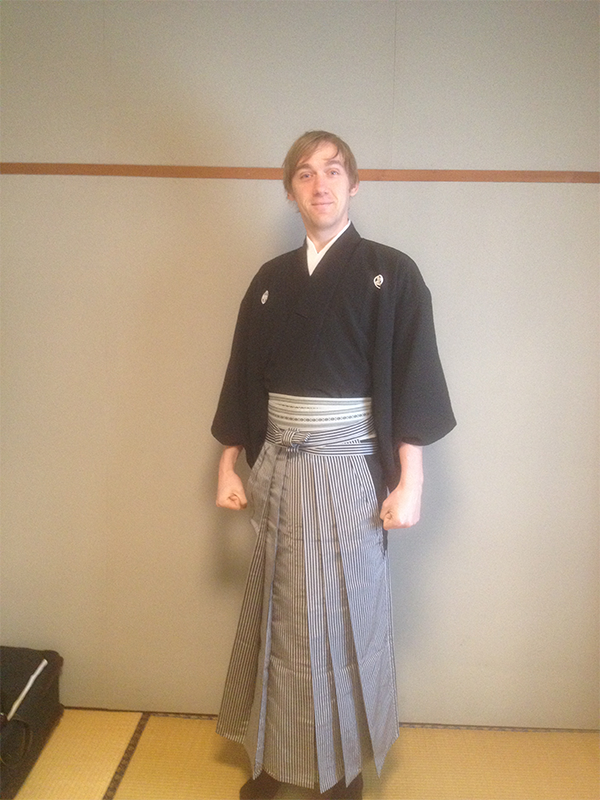
Gregory Sattler is a Ph.D. student in the Department of History at the University of California, Los Angeles. His research focuses on sea merchants in East Asia from the ninth to thirteenth centuries, with a particular consideration of their place in society, their trade networks, and their relationships with government officials. Gregory has recently published an article titled “The Ideological Underpinnings of Private Trade in East Asia, ca. 800–1127” (Journal of Asian Humanities at Kyushu University 6) and he is currently working on two additional manuscripts. He has received degrees in Taiwan and Japan, and is a proficient speaker of both Chinese and Japanese.
Credits
Episode No. 5
Release date: December 26, 2021
Recording location: Los Angeles, CA
Bibliography courtesy of Yiming Ha
Images
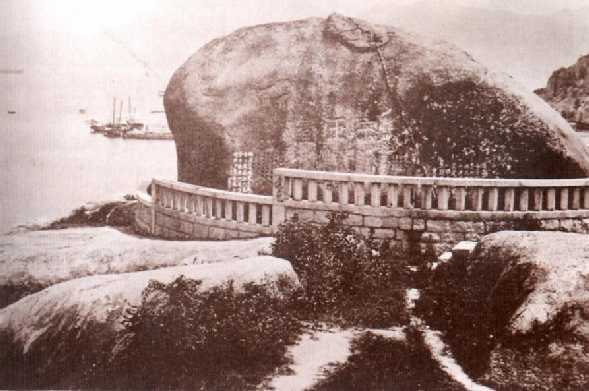
Cover Image: Song Wong Tai 宋王臺, or Terrace of the Song King, was a memorial carved on a large rock in Hong Kong after the Yuan conquest to honor the child Song emperors who died. This picture was taken before it was demolished by Japanese forces occupying Hong Kong for an extension of Kai Tak airport. (Image Source)
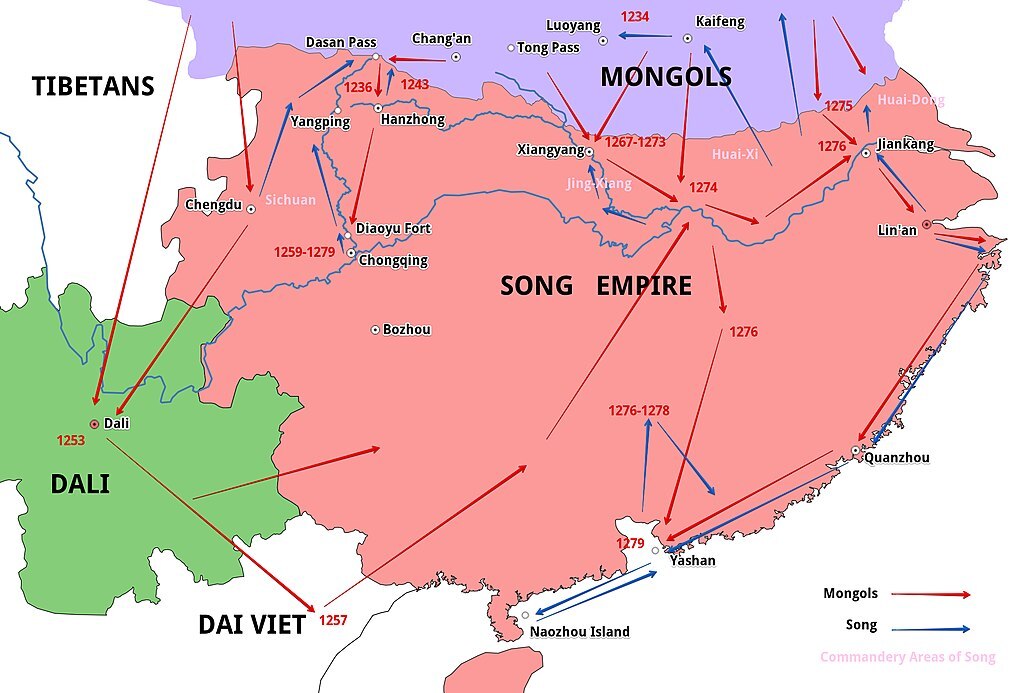
Map of the Mongol invasions of the Southern Song, 1234-1279 (Image Source)
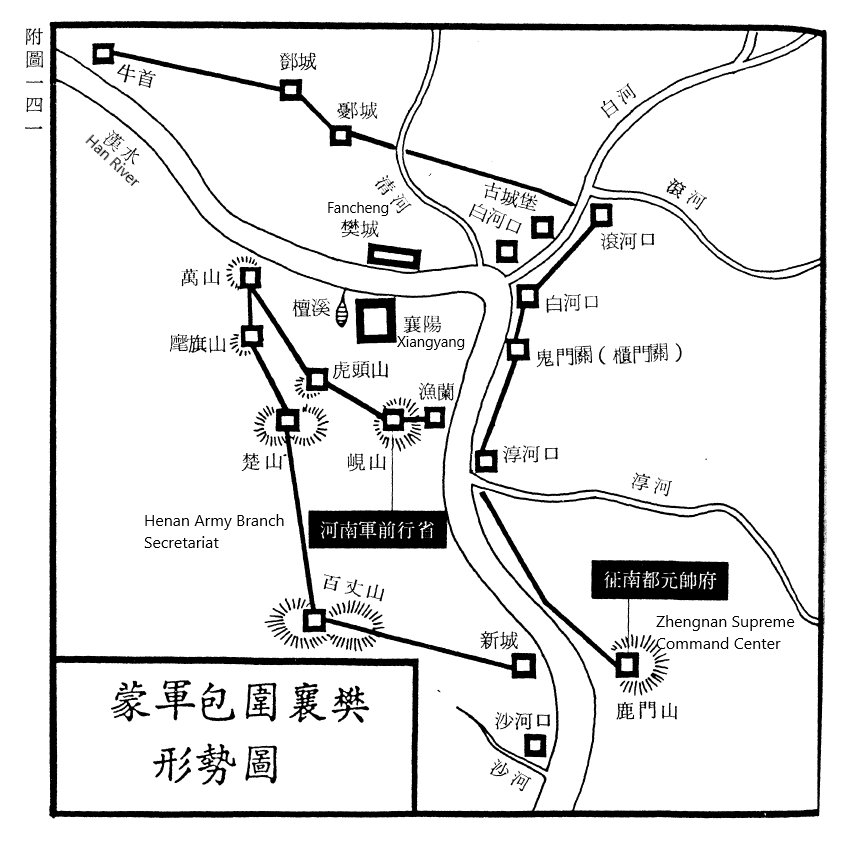
Mongol siege fortifications during the Siege of Xiangyang, 1268-1273 (Image Source: Li, Song Yuan zhan shi)
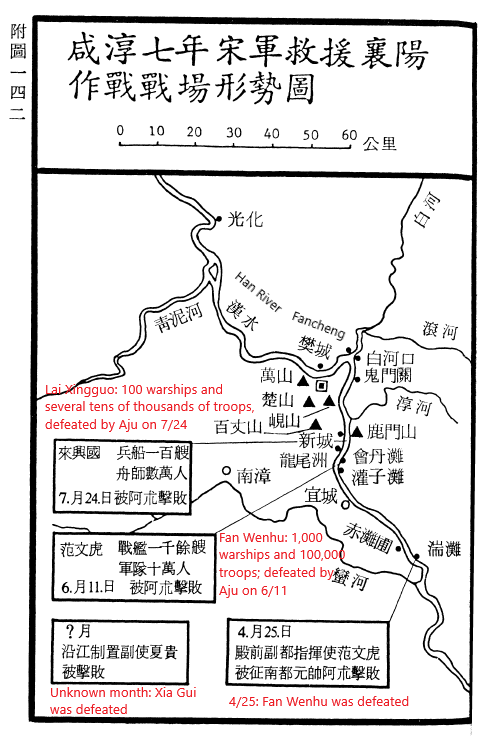
Song attempts at reinforcing Xiangyang in 1271 (Image Source: Li, Song Yuan zhan shi)
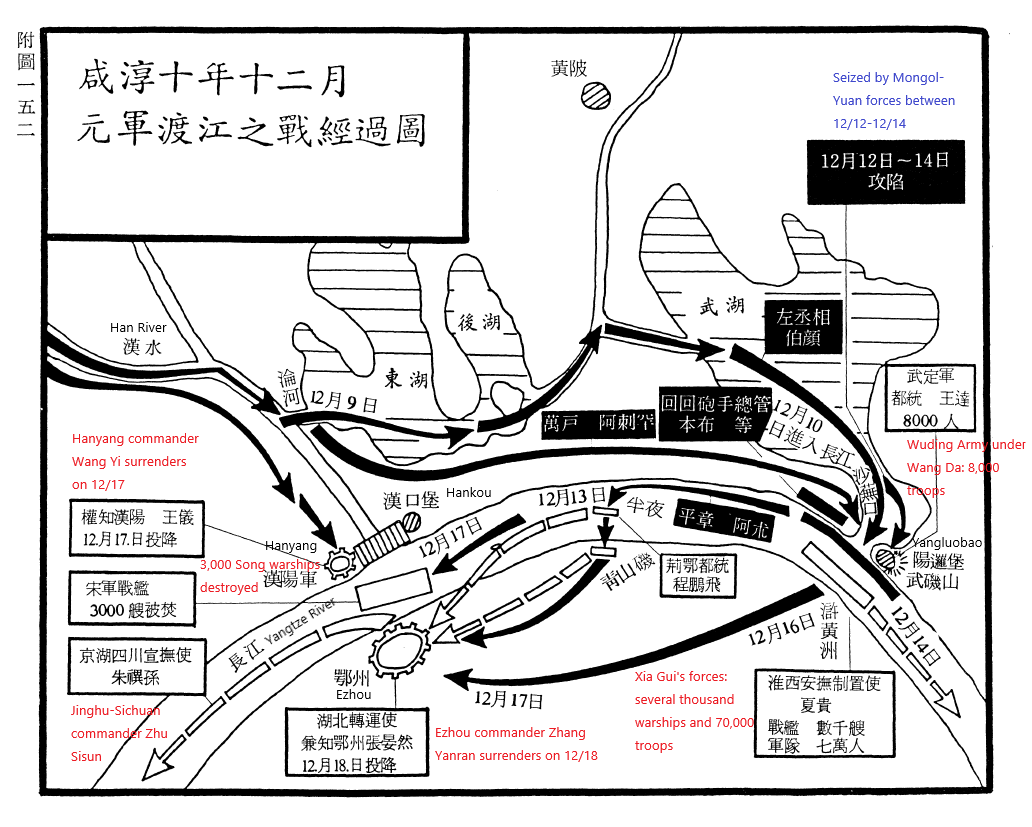
Battle of Ezhou, 1274 (Image Source: Li, Song Yuan zhan shi)
Select Bibliography
Davis, Richard L. “The Reigns of Tu-Tsung (1264-274) and His Successors to 1279.” In The Cambridge History of China, Vol. 5, Part 1: The Sung and Its Precursors, 907-1279, edited by Denis Twitchett and Paul Jakov Smith, 913-962. Cambridge: Cambridge University Press, 2009.
Li Tianming 李天鳴. Song Yuan zhan shi 宋元戰史 [History of the Song-Yuan War]. Taipei: Shihuo chubanshe, 1988.
Li Zhi’an 李治安. Hubilie zhuan 忽必烈傳 [Biography of Khubilai Khan]. Beijing: Renmin chubanshe, 2004.
Lorge, Peter. War, Politics and Society in Early Modern China, 900-1795. London: Routledge, 2005.
Needham, Joseph and Robin D.S. Yates. Science and Civilisation in China: Volume 5, Chemistry and Chemical Technology; Part 6, Military Technology: Missiles and Sieges. Cambridge: Cambridge University Press, 1995.
Sugiyama Masaaki 杉山正明. Kubirai no chōsen: Mongoru ni yoru seikaishi no daitenkai クビライの挑戦 モンゴルによる世界史の大転回 [Khubilai’s Challenge: The Mongols and World Revolution]. Tokyo: Kodansha, 2010.
Wu Guoqing 武國卿. Zhongguo zhanzheng shi, diliu juan: Yuanchao shiqi, Mingchao shiqi 中國戰爭史,第六卷:元朝時期,明朝時期 [History of Warfare in China, Vol. 6: Yuan Dynasty Period and Ming Dynasty Period]. Beijing: Renmin chubanshe, 2016.
Yamauchi Shinji 山内晋次. Nissō bōeki to “iō no michi” 日宋貿易と『硫黄の道』 [The Japan-Song Trade and “The Sulfur Route”]. Tokyo: Yamakawa shuppansha, 2009.

